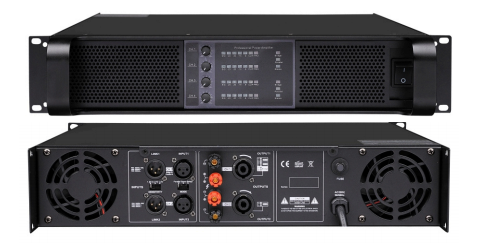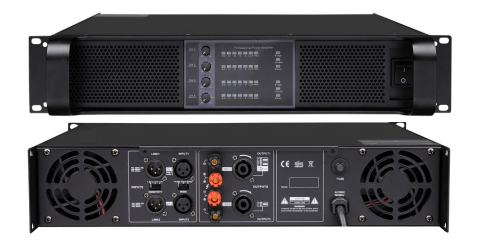How to Get the Best Audio Performance from a Professional Class TD Power Amplifier?
Achieving the best audio performance from a Class TD Power Amplifier is crucial for professional sound systems, live performances, and high-fidelity audio setups. Class TD Power Amplifiers combine the efficiency of Class D amplifiers with the sound quality of Class AB, making them a popular choice for audio professionals. To fully optimize a Class TD Power Amplifier, it’s important to focus on installation, configuration, and maintenance. This guide will walk you through everything you need to know to ensure your Class TD Power Amplifier delivers the best sound possible.

Understanding the Basics of Class TD Power Amplifiers
What is a Class TD Power Amplifier?
A Class TD Power Amplifier is a hybrid amplification technology that bridges the gap between Class AB and Class D amplifiers. It offers:
- High Efficiency – Consumes less power while delivering high output.
- Superior Audio Quality – Maintains the warmth and clarity of analog amplification.
- Reduced Heat Dissipation – Generates less heat compared to traditional Class AB amplifiers.
- Lower Distortion Levels – Ensures cleaner and more dynamic sound reproduction.
Why Choose a Class TD Power Amplifier?
Professionals opt for Class TD Power Amplifiers because they provide:
- Better efficiency than Class AB
- Lower distortion than Class D
- Improved thermal management
- High power output with minimal noise
Optimizing the Setup of a Class TD Power Amplifier
Selecting the Right Power Rating
- Match Speaker Requirements – Ensure the amplifier’s wattage aligns with your speaker system.
- Peak vs. RMS Power – RMS (continuous power) is a more reliable measure than peak power.
- Avoid Overloading – Overpowering speakers can cause distortion and damage components.
Ensuring Proper Impedance Matching
- Check Speaker Impedance – Most speakers operate at 4, 6, or 8 ohms.
- Amplifier Stability – Ensure your Class TD Power Amplifier can handle the connected load.
- Balanced Performance – Proper impedance matching prevents distortion and overheating.
Optimizing Signal Flow
- Use Balanced XLR or TRS Connections – Reduces interference and ensures clean signal transmission.
- Proper Gain Staging – Adjust input gain for optimal headroom and minimal noise.
- High-Quality Cables – Use shielded cables to avoid signal degradation.
Enhancing Audio Quality with a Class TD Power Amplifier
Adjusting Equalization and DSP Settings
- Fine-Tune Frequencies – Adjust lows, mids, and highs for a balanced mix.
- Use Built-in DSP – Many Class TD Power Amplifiers come with digital signal processing (DSP) features for advanced tuning.
- Room Acoustics Consideration – Make adjustments based on room size and speaker placement.
Reducing Noise and Distortion
- Avoid Clipping – Keep gain levels within the recommended range.
- Use High Signal-to-Noise Ratio (SNR) Components – Ensure clear audio without background noise.
- Regularly Inspect Wiring – Loose or poor-quality connections can introduce unwanted noise.
Speaker Positioning for Optimal Performance
- Even Sound Distribution – Ensure speakers are placed at the right angles and distances.
- Minimize Reflections and Echoes – Use acoustic treatment if necessary.
- Adjust Crossover Settings – Properly set crossover points for subwoofers and full-range speakers.
Maintenance and Troubleshooting a Class TD Power Amplifier
Routine Maintenance Tips
- Keep the Amplifier Clean – Dust and debris can affect cooling efficiency.
- Check Ventilation – Ensure the unit has adequate airflow to prevent overheating.
- Inspect Connectors and Cables – Loose or damaged cables can cause signal loss.
Common Issues and Solutions
- Overheating – Ensure proper ventilation and do not exceed power limits.
- Distortion or Clipping – Adjust gain settings and check for impedance mismatches.
- Power Failures – Inspect power supply and fuses for any faults.
Maximizing the Performance of Your Class TD Power Amplifier
To get the best audio performance from a Class TD Power Amplifier, proper setup, optimization, and maintenance are key. By ensuring correct impedance matching, optimizing signal flow, and fine-tuning audio settings, you can achieve superior sound quality with minimal distortion. Regular maintenance and troubleshooting will also help extend the life and efficiency of your Class TD Power Amplifier, ensuring it consistently delivers high-quality audio for professional applications.
